Selected References:
- Anderson, K. N., Lind, J. N., Simeone, R. M., Bobo, W. V., Mitchell, A. A., Riehle-Colarusso, T., Polen, K. N., & Reefhuis, J. (2020). Maternal Use of Specific Antidepressant Medications During Early Pregnancy and the Risk of Selected Birth Defects. JAMA psychiatry, 77(12), 1246–1255.
- Bellantuono C, et al. 2015. The safety of serotonin-noradrenaline reuptake inhibitors (SNRIs) in pregnancy and breastfeeding: a comprehensive review. Hum Psychopharmacol. 30(3):143-51.
- Berard A, et al. 2017. Antidepressant use during pregnancy and the risk of major congenital malformations in a cohort of depressed pregnant women: An updated analysis of the Quebec Pregnancy Cohort. BMJ Open;7:e013372.
- Berle JO, et al. 2004. Breastfeeding during maternal antidepressant treatment with serotonin reuptake inhibitors: infant exposure, clinical symptoms, and cytochrome P450 genotypes. J Clin Psychiatry. 65(9):1228-1234.
- Chambers CD, et al. 2006. Selective serotonin-reuptake inhibitors and risk of persistent pulmonary hypertension of the newborn. N Engl J Med. 354:579-587.
- Dandjinou M, et al. 2019. Antidepressant use during pregnancy and risk of gestational diabetes mellitus: a nested case-control study. BMJ Open 9(9):e025908.
- Das N, Chadda RK. 2020. Hyperprolactinemic galactorrhea associated with cefpodoxime in a patient with recurrent depressive disorder on venlafaxine monotherapy: A case report. J Clin Psychopharmacol.;40:635–6
- Desai PH, et al. 2019. Risk of congenital heart disease in newborns with prenatal exposure to anti-depressant medications. Cureus 11(5):e4673.
- de Santi F, Beltrame FL, Rodrigues BM, Junior MJVP, Scaramele NF, Lopes FL, Cerri PS, Sasso-Cerri E. Venlafaxine-induced damage to seminiferous epithelium, spermiation, and sperm parameters in rats: A correlation with high estrogen levels. Andrology. 2021 Jan;9(1):297-311. doi: 10.1111/andr.12852. Epub 2020 Sep 9. PMID: 32598512.
- Einarson A, et al. 2001. Pregnancy outcome following gestational exposure to venlafaxine: a multicenter prospective controlled study. Am J Psychiatry. 158(10):1728-1730.
- Ferreira E, et al. 2007. Effects of selective reuptake inhibitors and venlafaxine during pregnancy in term and preterm neonates. Pediatrics. 119(1):52-59.
- Furu K, et al. 2015. Selective serotonin reuptake inhibitors and venlafaxine in early pregnancy and risk of birth defects: population based cohort study and sibling design. Bmj. 350:h1798.
- Grzeskowiak LE, et al. 2022. Perinatal antidepressant use and breastfeeding outcomes: Findings from the Norwegian Mother, Father and Child Cohort Study. Acta Obstet Gynecol Scand. 101:344–54
- Grigoriadis S, et al. 2013. The effect of prenatal antidepressant exposure on neonatal adaptation: a systematic review and meta-analysis. J Clin Psychiatry.74(4):e309-20.
- Holland J, Brown R. 2017. Neonatal venlafaxine discontinuation syndrome: A mini-review. Eur J Paediatr Neurol. 21(2):264-8.
- Ilett KF, et al. 2002. Distribution of venlafaxine and its o-desmethyl metabolite in human milk and their effects in breastfed infants. Br J Clin Pharmacol. 53:17-22.
- Kieviet N, et al. 2015. Risk factors for poor neonatal adaptation after exposure to antidepressants in utero. Acta Paediatr.104(4):384-91.
- Kolding L, et al. 2021. Antidepressant use in pregnancy and severe cardiac malformations: Danish register-based study. BJOG 128(12):1949-1957.
- Lassen D, et al. 2016. First-trimester pregnancy exposure to venlafaxine or duloxetine and risk of major congenital malformations: A systematic review. Basic Clin Pharmacol Toxicol. 118(1):32-6.
- Lennestal R and Kallen B. 2007. Delivery outcome in relation to maternal use of some recently introduced antidepressants. J Clin Psychopharmacol. 27(6):607-613.
- Levinson-Castiel R, et al. 2006. Neonatal abstinence syndrome after in utero exposure to selective serotonin reuptake inhibitors in term infants. Arch Pediatr Adolesc Med. 160:173-176.
- Marks C, et al. 2021. Comparing newborn outcomes after prenatal exposure to individual antidepressants: A retrospective cohort study. Pharmacotherapy. 41(11):907-914.
- Matthys A, et al. 2014. Psychotropic medication use during pregnancy and lactation: Role of ultrasound assessment. Donald Sch J Ultrasound Obstet Gynecol. 8:109-21.
- Newport DJ, et al. 2009. Venlafaxine in human breast milk and nursing infant plasma: determination of exposure.J Clin Psychiatry. 70(9):1304-10.
- Newport DJ, et al. 2016. Prenatal psychostimulant and antidepressant exposure and risk of hypertensive disorders of pregnancy. J Clin Psychiatry. 77(11):1538-45.
- Nulman I, et al. 2012. Neurodevelopment of children following prenatal exposure to venlafaxine, selective serotonin reuptake inhibitors, or untreated maternal depression.Am J Psychiatry. 169(11):1165-74.
- Polen KN, et al, National Birth Defects Prevention Study. 2013. Association between reported venlafaxine use in early pregnancy and birth defects, national birth defects prevention study, 1997-2007. Birth Defects Res A Clin Mol Teratol.97(1):28-35.
- Rai D, et al. 2017. Antidepressants during pregnancy and autism in offspring: population based cohort study. BMJ 358:j2811,
- Richardson JL, et al. 2019. Pregnancy outcomes following maternal venlafaxine use: a prospective observational comparative cohort study. Reprod Toxicol 84:108-113,
- Schoretsanitis G, et al. 2019. Antidepressants in breastmilk: comparative analysis of excretion ratios. Arch Womens Ment Health 22(3):383-390.
- Wang XY, et al. 2023. Antidepressant use during pregnancy and the risk for gestational diabetes: a systematic review and meta-analysis. J Matern Fetal Neonatal Med 36(1):2162817,
- Wartko PD, et al. 2019. Antidepressant continuation in pregnancy and risk of gestational diabetes. Pharmacoepidemiol Drug Saf 28(9): 1194-1203.
- Westin AA, et al. 2017. Selective serotonin reuptake inhibitors and venlafaxine in pregnancy: Changes in drug disposition. PLoS One. 12(7):e0181082.
- Yue M, et al. 2023. Pharmacokinetics of Antidepressants in Pregnancy. J Clin Pharmacol. 63 Suppl 1:S137-S158.

